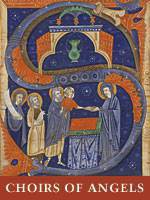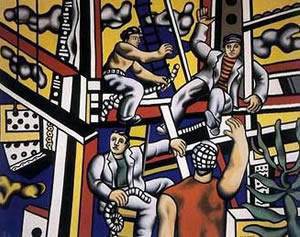
Image courtesy of the Metropolitan Museum
www.metmuseum.org
Jewel-like Paintings from Medieval Italian Choir Books on View at Metropolitan Museum of Art
Some two dozen of the most splendid examples from The Metropolitan Museum of Art’s little-known but precious collection of choral manuscript illuminations will be exhibited in the Museum’s Medieval Sculpture Hall beginning November 25 2008
]]>
With jewel-like color and gold, these charming images—which include singing angels, Hebrew prophets, heroic saints, and lavishly costumed Renaissance princes—spring from the unique, artful marriage of painting, calligraphy, and musical notation. The installation will highlight works created in the 14th and 15th centuries in two of the Italian centers of this art form—Florence and Siena—by some of the most celebrated painters of the time. Girolamo dai Libri, Lorenzo Monaco, Mariano del Buono, Niccolò di Ser Sozzo, Don Silvestro dei Gherarducci, Sano di Pietro, and the Master of the Franciscan Breviary are among the featured artists. The works in the exhibition entered the collection of the Metropolitan Museum (which was founded in 1870) over nearly the full span of its existence—from a manuscript donated in 1888 to another that was purchased in 2007.
The exhibition is made possible by the Michel David-Weill Fund.
Illuminated choral manuscripts developed in the Middle Ages because of the integral role of choirs in Christian worship. While choral books served a practical purpose, enabling people to sing together, they also provided an opportunity for artistic embellishment.
Images in many choral manuscripts relate specifically to the text, but some are more general in nature. An illuminated fragment, purchased by the Museum in 1912 and recently recognized as the work of Girolamo dai Libri, shows three Olivetan monks, hands clasped in prayer, singing. Two of them look to heaven as they sing, while the third looks down devoutly. Another page from the same manuscript shows King David as a musician.
Generally, the initial letter of the first word of text is where the most elaborate decorations are found. Medieval illuminators created wonderfully imaginative images within the boundaries of a letter form. The letter R in the word Requiem, for instance, inspired Mariano del Buono to depict a group of mourners moving toward the right in the bottom half of the letter. At the top of the letter, the funeral procession—now moving to the left—makes its way up a staircase and into a church.
Biblical stories situated in a contemporary setting have special appeal. The Maccabees of the Old Testament, for example, are attired as medieval knights; their location is no longer the Holy Land, but rather a typical Italian landscape.
Choral manuscripts were created in large numbers and were also frequently removed from use, for a variety of reasons. When the liturgy changed, the old books became obsolete and were often replaced with new ones that better reflected the worship practices. During turbulent times in history—such as the secularization of the monasteries under Napoleon—a large number found their way into the marketplace. Illuminated choir book pages have been available and collected for two hundred years.
Follow us on:

